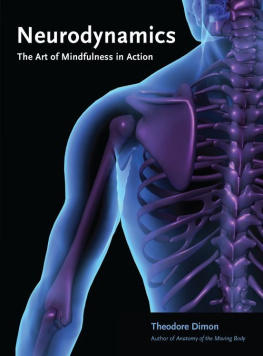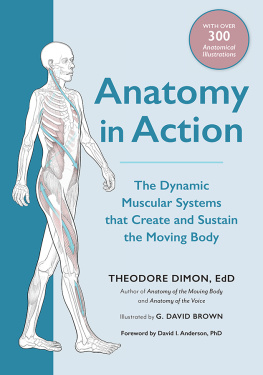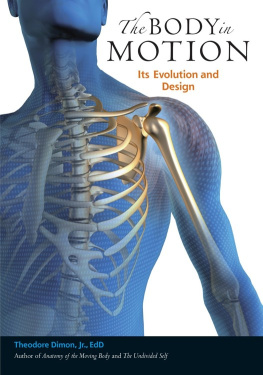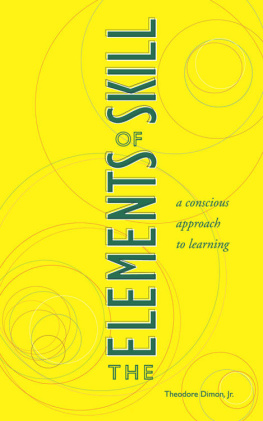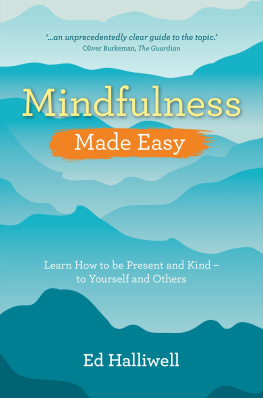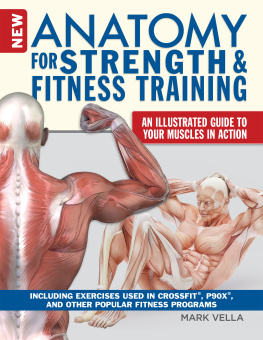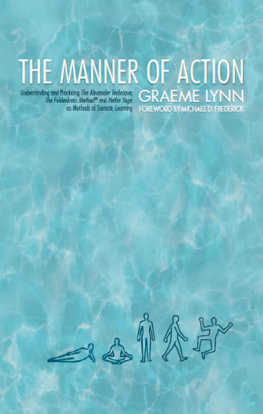Anatomy of the Moving Body: A Basic Course in Bones, Muscles, and Joints, Second Edition
Neurodynamics
The Art of Mindfulness in Action
Theodore Dimon

North Atlantic Books
Berkeley, California
Copyright 2015 by Theodore Dimon. All rights reserved. No portion of this book, except for brief review, may be reproduced, stored in a retrieval system, or transmitted in any form or by any meanselectronic, mechanical, photocopying, recording, or otherwisewithout the written permission of the publisher. For information contact North Atlantic Books.
Published by
North Atlantic Books
Berkeley, California
Cover image dreamstime.com/tose
Cover design by Claudia Smelser
Illustrations by G. David Brown, Helen Leshinsky, and Jim Strauss
Neurodynamics: The Art of Mindfulness in Action is sponsored and published by the Society for the Study of Native Arts and Sciences (dba North Atlantic Books), an educational nonprofit based in Berkeley, California, that collaborates with partners to develop cross-cultural perspectives, nurture holistic views of art, science, the humanities, and healing, and seed personal and global transformation by publishing work on the relationship of body, spirit, and nature.
North Atlantic Books publications are available through most bookstores. For further information, visit our website at www.northatlanticbooks.com or call 800-733-3000.
MEDICAL DISCLAIMER: The following information is intended for general information purposes only. Individuals should always see their health care provider before administering any suggestions made in this book. Any application of the material set forth in the following pages is at the readers discretion and is his or her sole responsibility.
Library of Congress Cataloging-in-Publication Data
Dimon, Theodore.
Neurodynamics : the art of mindfulness in action / Theodore Dimon.
pages cm
Includes .
Summary: Written for both beginning and advanced students, the book offers in-depth explanations of the theory of neurodynamics, outlining steps of development and practical exercisesProvided by publisher.
ISBN 978-1-58394-979-5 (trade)ISBN 978-1-58394-980-1 (ebook)
1. Neurophysiology. 2. Mindfulness-based cognitive therapy. I. Title.
QP355.D56 2015
612.8dc23
2015001735
Contents
This book is a practical and theoretical manual on the use of the body in action, how to restore its proper working and prevent interference caused by harmful habits, and how to become more aware and mindful in action. It is written for both beginning and advanced students, and comes out of thirty-five years of personal and professional research in the field.
This book is not, like my other books, written as theory but is intended to offer practical information and steps of development. But this does not mean that I am willing to present a simple how-to book. This is a complex field with real depth; as such, it cannot be taught as a series of how-to steps but requires real thought and understanding on the part of the student. A true understanding of this subject requires self-study based on real knowledge; for this reason, this book is aimed at more than giving cursory exercises. The goal is to provide the student with knowledge of how the body works in action, how to restore this system, and how to gain awareness and control in actiona process that cannot be achieved in a few days or weeks but requires committed application and study over time.
In giving this system a name, I do not mean to promote a method in the ordinary sense, because methods for bringing about improvements have no value if they are not based on a working knowledge of the muscular system and how it operates. What good does it do to stretch this or that muscle, to strengthen this or that muscle group, if we do not know how these muscles are actually designed to function and how to restore that natural function? To be sound, a method must be based on a true working knowledge of how the musculoskeletal system is designed to function in action and how to restore this system, and this knowledge is far more important than the particular techniques used in any one case. This book is based on precisely that: knowledge of this system and how it functions, not simply on a set of exercises for bringing about improvements. Once we understand these principles of functioning, the particular way that we go about making changes becomes relatively unimportant in relation to our understanding of how muscles work, how the system works as a whole, and how to prevent the things that interfere with it.
Together these elements comprise a new branch of study I have defined as neurodynamics, or the study of the psychophysical machinery in action as a dynamic system. The study of this field opens up a new approach to education and health based on a comprehensive appreciation of the human body in action and how to gain a more conscious awareness of it in order to improve functioning. It also represents a new behavioral principle that has an important place in our understanding of education and child development.
One discipline that has made great strides in recent decades in contributing to our understanding of how the human system functions in activity is neuroscience. As we will see in these pages, various aspects of neuroscience, including the role of stretch reflexes in postural support, the nature of muscle function, the role of motor units in influencing muscle length, and the role of the gamma system in action, are essential to a proper understanding of this subject.
But neuroscience is a largely experimental science whose objective is to explain how systems work and how various operations of the brain can explain mental processes. As such, neuroscience is largely descriptive and explanatory and cannot address the practical question of why our system is imbalanced, and how to gain greater control through a process of self-education. This means that, while the study of neuroscience is pertinent to this discussion, neuroscience alone cannot address this subject, which requires a new and dynamic approach. Experimental science, and the clinical applications based on its findings, may produce impressive empirical data, but in the end, these results are superficial compared to what can be achieved by studying ourselves in action and understanding the possibility of raising the process of action to a higher level of conscious controla problem that is fundamentally educational and experiential in nature.
Another area that has received a great deal of attention in recent years is mindfulness, the benefits of which have been well established and have become the object of serious scientific inquiry. But it is crucial to realize that mindfulness practice alone has little value if we do not first gain an understanding of and appreciation for the fundamentally unconscious nature of action and reaction. In my personal investigations into this subject, I realized early on that my apparently physical and muscular issues were actually part of a basic pattern of unconscious behavior and could not be fully addressed until I could come to terms with this aspect of the problem, which awareness and mindfulness practices cannot solve. The study of mindfulness, first and foremost, must be grounded in an understanding of psychophysical functioning and not just in meditative practice; yet we know very little in practical terms about how this system works and how the entire process of action can be raised to a more conscious level. Understanding this subject is one of the central tenets of neurodynamics, which provides the foundation for a more complete system of awareness based on a working knowledge of the human body as a physical and mental machinery, grounded in the scientific and experiential study of the organism as a psychophysical whole.

